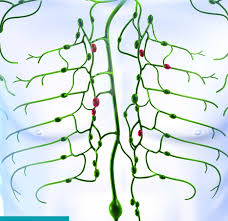Victoria LaManna, PT, DPT, CLT
 As Breast Cancer Awareness Month comes to an end, we at Beyond Basics are working hard to help spread the word on the importance of regular self-examination and early detection. For further review, please see our blog post from earlier this month.
As Breast Cancer Awareness Month comes to an end, we at Beyond Basics are working hard to help spread the word on the importance of regular self-examination and early detection. For further review, please see our blog post from earlier this month.
In addition to regular self-examination, regular breast massage is shown to help increase the circulation in your breasts. Therapeutic breast massage can also lessen discomfort associated with breast cancer treatments, help relieve post-surgical symptoms, and reduce discomfort during pregnancy, breastfeeding and weaning. Breast massage also contributes to improved skin tone while promoting relaxation and balancing your energy.
With regular massage, you will help diminish benign breast cysts while helping to flush lymph nodes and stimulating your glandular system. The breasts are soft tissue and do not have muscles to help them move, therefore they require assistance for improved circulation and lymph flow.
If you have been diagnosed with breast cancer and have undergone lymph node removal, mastectomy and/or radiation, you may experience lymphedema. About 15-20% of women who have axillary lymph nodes removed during breast cancer surgery will develop lymphedema. Working closely with your medical team to manage lymphedema is key! A Certified Lymphatic Therapist (CLT) can effectively apply gentle hands-on techniques to help enhance circulation and drainage.
Lymphatic Drainage is an accumulation of protein-rich lymphatic fluid in the tissues that contributes to swelling secondary to blockage in lymphatic flow when nodes or vessels are damaged. Individuals who have lymphedema may complain of discomfort in the affected limb, feeling of fullness in the limb, fatigue, or decreased flexibility. They may also complain of breast pain, tight-feeling skin, difficulty fitting into clothes, or tightness when wearing rings, bracelets, or watches. Venous insufficiency and obesity can contribute to lymphedema.
Complete Decongestive Therapy (CDT) consists of Manual Lymphatic Drainage (MLD) that aids in the circulation of body fluids, drains toxins from the body, stimulates the immune system and the parasympathetic system, reduces pain and/or muscle spasms, increases ROM, and decreases swelling. CDT can be used to treat conditions such as post-surgery and scars, fibromyalgia, chronic fatigue syndrome, infertility, painful periods, constipation, and irritable bowel syndrome. In conjunction, it is important to have an exercise program of stretching and strengthening to get the maximum benefits of CDT. After treatment, the patient may experience increased urinary frequency or increased amount of urine, increased sleep time or better quality of sleep, tension release and/or emotional release, or improved senses.
If you are seeking treatment, you need to see a licensed healthcare provider that is trained in Lymphatic Drainage Drainage Therapy. To find a specialist in your area, go to www.apta.org and click on “Find a PTâ€, specializing in LDT. Alternatively, you can search through the National Lymphatic Drainage Network or the Lymphatic Association of North America (LANA).
 Victoria LaManna, DPT, CLT, is our lymphedema expert. If you have had a mastectomy and are unsure about lymphedema care, she is an excellent resource. She will be able to instruct you in self- care and lymphedema prevention measures. Physical therapy can also help to release scar tissue in the breast and upper arm area, regain strength in the arm, and ultimately improve your function. Visit us, and read up on Victoria’s bio here, as well as on our website at: www.beyondbasicspt.com/lymphedema.
Victoria LaManna, DPT, CLT, is our lymphedema expert. If you have had a mastectomy and are unsure about lymphedema care, she is an excellent resource. She will be able to instruct you in self- care and lymphedema prevention measures. Physical therapy can also help to release scar tissue in the breast and upper arm area, regain strength in the arm, and ultimately improve your function. Visit us, and read up on Victoria’s bio here, as well as on our website at: www.beyondbasicspt.com/lymphedema.




